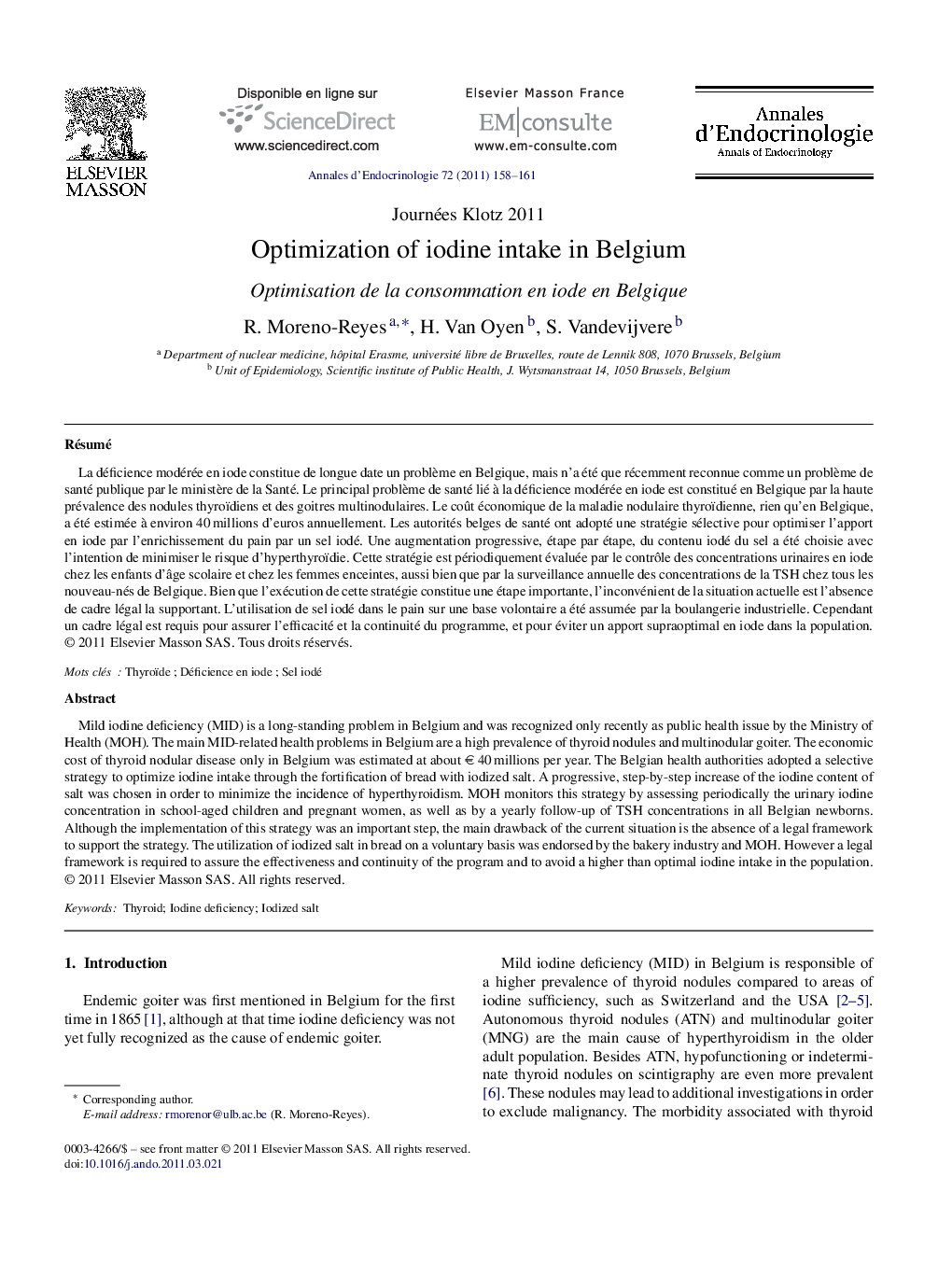| Article ID | Journal | Published Year | Pages | File Type |
|---|---|---|---|---|
| 3252831 | Annales d'Endocrinologie | 2011 | 4 Pages |
RésuméLa déficience modérée en iode constitue de longue date un problème en Belgique, mais n’a été que récemment reconnue comme un problème de santé publique par le ministère de la Santé. Le principal problème de santé lié à la déficience modérée en iode est constitué en Belgique par la haute prévalence des nodules thyroïdiens et des goitres multinodulaires. Le coût économique de la maladie nodulaire thyroïdienne, rien qu’en Belgique, a été estimée à environ 40 millions d’euros annuellement. Les autorités belges de santé ont adopté une stratégie sélective pour optimiser l’apport en iode par l’enrichissement du pain par un sel iodé. Une augmentation progressive, étape par étape, du contenu iodé du sel a été choisie avec l’intention de minimiser le risque d’hyperthyroïdie. Cette stratégie est périodiquement évaluée par le contrôle des concentrations urinaires en iode chez les enfants d’âge scolaire et chez les femmes enceintes, aussi bien que par la surveillance annuelle des concentrations de la TSH chez tous les nouveau-nés de Belgique. Bien que l’exécution de cette stratégie constitue une étape importante, l’inconvénient de la situation actuelle est l’absence de cadre légal la supportant. L’utilisation de sel iodé dans le pain sur une base volontaire a été assumée par la boulangerie industrielle. Cependant un cadre légal est requis pour assurer l’efficacité et la continuité du programme, et pour éviter un apport supraoptimal en iode dans la population.
Mild iodine deficiency (MID) is a long-standing problem in Belgium and was recognized only recently as public health issue by the Ministry of Health (MOH). The main MID-related health problems in Belgium are a high prevalence of thyroid nodules and multinodular goiter. The economic cost of thyroid nodular disease only in Belgium was estimated at about € 40 millions per year. The Belgian health authorities adopted a selective strategy to optimize iodine intake through the fortification of bread with iodized salt. A progressive, step-by-step increase of the iodine content of salt was chosen in order to minimize the incidence of hyperthyroidism. MOH monitors this strategy by assessing periodically the urinary iodine concentration in school-aged children and pregnant women, as well as by a yearly follow-up of TSH concentrations in all Belgian newborns. Although the implementation of this strategy was an important step, the main drawback of the current situation is the absence of a legal framework to support the strategy. The utilization of iodized salt in bread on a voluntary basis was endorsed by the bakery industry and MOH. However a legal framework is required to assure the effectiveness and continuity of the program and to avoid a higher than optimal iodine intake in the population.
